What do donors think about giving now we are 7 months into the pandemic?
As the number of infections increase across the UK and restrictions on our movements are re-imposed, I hope these findings from the fourth round of Bluefrog's research into giving in the time of Coronavirus will help you plan your fundraising for the weeks and months ahead.
After suggestions and comments, it appears that most people just want the highlights so what follows is a thirteen-minute video that sums up what we’ve uncovered.
Or if you'd rather just read the key points, here you go...
First off the same caveat as before. Things are still changing very quickly. The last of our interviews were carried out in the first week of October, but the calm we saw over the summer is in fast retreat. Concerns about the virus and the economy are mounting. Things could change rapidly as the situation develops.
Now onto the findings, broken down into seven sections:
The general mood
If there is a word that sums up how people are feeling it is despondent. The Government is increasingly seen to be incompetent and untrustworthy. People don’t think they have much of a clue as to how we should handle the pandemic. The bogeyman still seems to be Cummings, but Johnson and Hancock aren’t far behind.
Confusion at the top has generated a growing sense amongst donors that they have to increasingly take responsibility for what is best for them, their families and their jobs. This has elevated their reliance on mainstream and social media as they struggle to make sense of what the new government rules actually mean. This is further driving a sense of exhaustion amongst people who are already very tired.
The result has been that people are taking action to gain more control over their lives. They can’t trust the Government, so they must trust themselves to get through the latest iteration of the pandemic.
What should be noted is that this is driving new behaviour. People who have traditionally always followed rules are now considering breaking laws surrounding Covid-19 that they see as stupid or unjust.
The Black Lives Matter movement
In short, people are now primed to see injustice where they might have failed to notice it before. And more importantly, they are agitated by it.
As well as racism, people also spoke about the impact of discrimination on other groups - this included trans people, immigrants and the elderly.
Again, media coverage had been very important here. People can only respond to a need that they know to exist. The Black Lives Matter movement has effectively boosted understanding of – and concern about – prejudice.
The NHS
The NHS (as a recipient of donations) has largely fallen off the radar. People who donated to them at the start of the pandemic when charities went quiet have continued to have second thoughts about why they gave. They hope their money went some way to helping – though they aren’t sure what it will have done.
The economy
Financial plans were shared with us. Holidays in 2021 have already been cancelled and non-essential purchases like a new winter coat have been postponed until next year.
The worry about what will happen in the coming months has caused people to start thinking about how else they might economise.
For the first time since the economic crash in 2008, people are talking of stopping their support of charities because they feel financially insecure.
However – importantly – people DO NOT want to stop giving – particularly to causes that they see as important or relevant now. There is a degree of determination here. It is important to highlight some key findings around this:
- People are filtering out charity communications according to their specific needs and interests.
- If someone has lost their job, or are financially worried, they feel absolved from reading them. They feel little guilt about this.
- This means that charities should not feel overly worried about asking for help.
- Donors know there is a very high level of need which they expect to increase. They expect and want charities to raise money.
- People are not angry if they are being asked for help – even if they are financially strapped.
Managing giving
A new hierarchy has been developed to help people manage their portfolios. Those causes close to the core can expect to retain support, even when times get tough.

Donors are using a three-stage filter to manage their giving decisions. These focus on ability to give, value of gift and post-donation emotion:
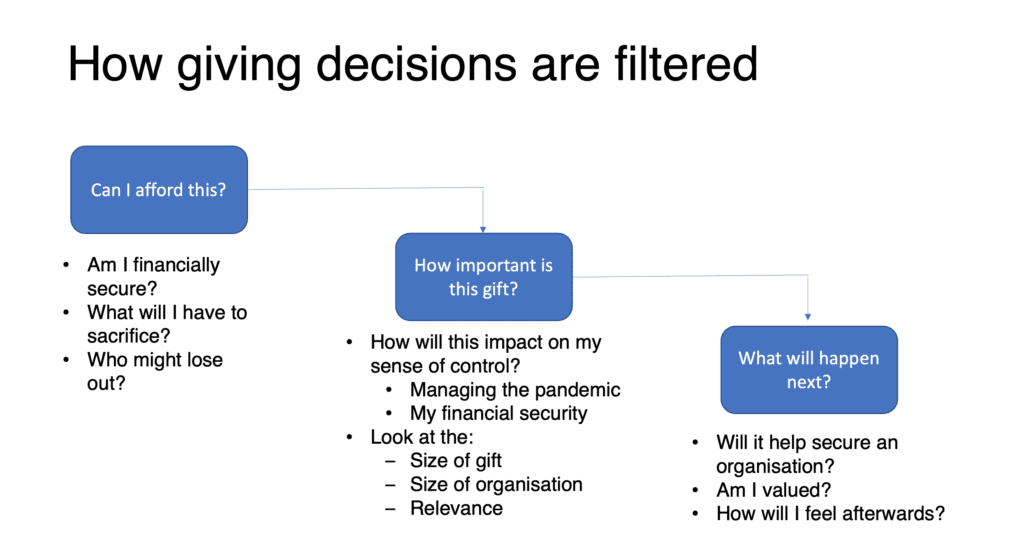
Filling the vacuum
In the Spring, the NHS filled the philanthropic vacuum when so many charities appeared to stop asking for help. The new vacuum that charities can help fill is one of stability. People want to trust in something. That can be charities that can offer a voice of:
- Sanity
- Honesty
- Reason
Charities obviously can’t fill the vacuum on their own, but they can be an antidote to the leadership void for specific causes. Donors want you to demonstrate leadership in your specialist area and show how you are responding to what is happening now.
What else do donors want?
Donors want their most trusted charitable partners to have their house in order. You need to show how you have planned for the next stage of the pandemic and are ready to deliver services to those in need. Remember that your supporters are counting on you to deliver key services - they don’t want to have to worry about you as well!
Agility is not necessarily seen as an attractive trait by donors now. Unless it is presented as pro-active decision making, it can appear like well-meaning panic. Instead, share your plans and show your donors what help you need and when.
Offer your supporters help in planning how they support you. If someone cancels a direct debit you should still give them a chance to choose payment holidays. We found donors who had cancelled a direct debit reacted very negatively to being called and asked to restart. Cancelling often came after much soul-searching. This meant that reactivation requests were seen to be demonstrating a complete lack of empathy.
Instead ask your donors if they are happy to still receive mailings and emails (if they care about your work, the answer is likely to be yes) and ask if you can get back in touch about the direct debit once the pandemic is over (the answer is likely to also be yes). And as before, those people with time on their hands would love to volunteer in some way.
Also please don't forget, some donors will still consider giving an additional monthly gift (limited for the length of the pandemic) as very attractive.
In terms of the work that you feature in your appeals, focus on the activities that reflect your core offer or, if you are working in a new way, helping your core audience. This is important as it will address their desire for a sense of stability.
And if you are considering a rebrand hang on for a while longer. Many donors will see a rebrand as a costly, unnecessary and unwelcome change, so postpone until well into 2021 or, ideally, 2022.
Up your thanking game. Use your newsletters to feedback on work that the partnership between you and your donor has made possible. Emphasise how you consider donors as a key part of your team.
And don't forget your mid-value file. This group of donors has been relatively well insulated from some of the worst effects of the pandemic, but they still have worries, so keep an eye on how they are responding. If you find response rates falling, don't be frightened of getting in touch to see how they are and, for those supporters who haven't given for a while, consider reducing how much you usually ask them for.
And finally, in summary
Here are the key need states that fundraisers need to address:
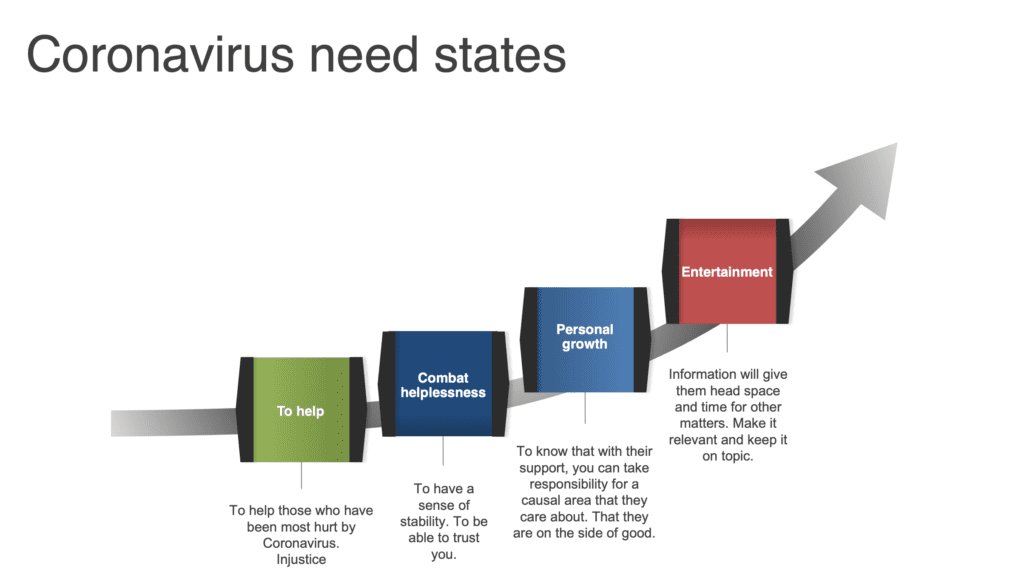
The video contains more relevant information should this have left you with questions and there is an hour-long presentation as well. It was created primarily for Bluefrog clients but could be shared further. Please get in touch if you'd like me to take you through it and if there's enough interest I'd be happy to put on a webinar or two.
So please, stay safe and remember that your donors are counting on you to deliver the services that they value at a very scary time. They need you to do what you do best - helping those most affected by the pandemic. And that means that they expect you to ask them for help. Make sure that you do.
We are currently speaking to alumni donors about their attitudes to giving to their university and other charities. This report (which will be useful for mid-level fundraisers across the sector) will be released in early December. We also hope to publish the fifth round of the main study shortly afterwards. Until then, best of luck.
Tags In
Related Posts
13 Comments
Comments are closed.
The Essentials

Crack the Code to Regular Giving: Insights, Strategies, and a Special Giveaway!

‘Tis Halloween. Keep to the light and beware the Four Fundraisers of the Apocalypse!

Why do people give? The Donor Participation Project with Louis Diez.

A guide to fundraising on the back of a postcard

What does the latest research tell us about the state of fundraising?


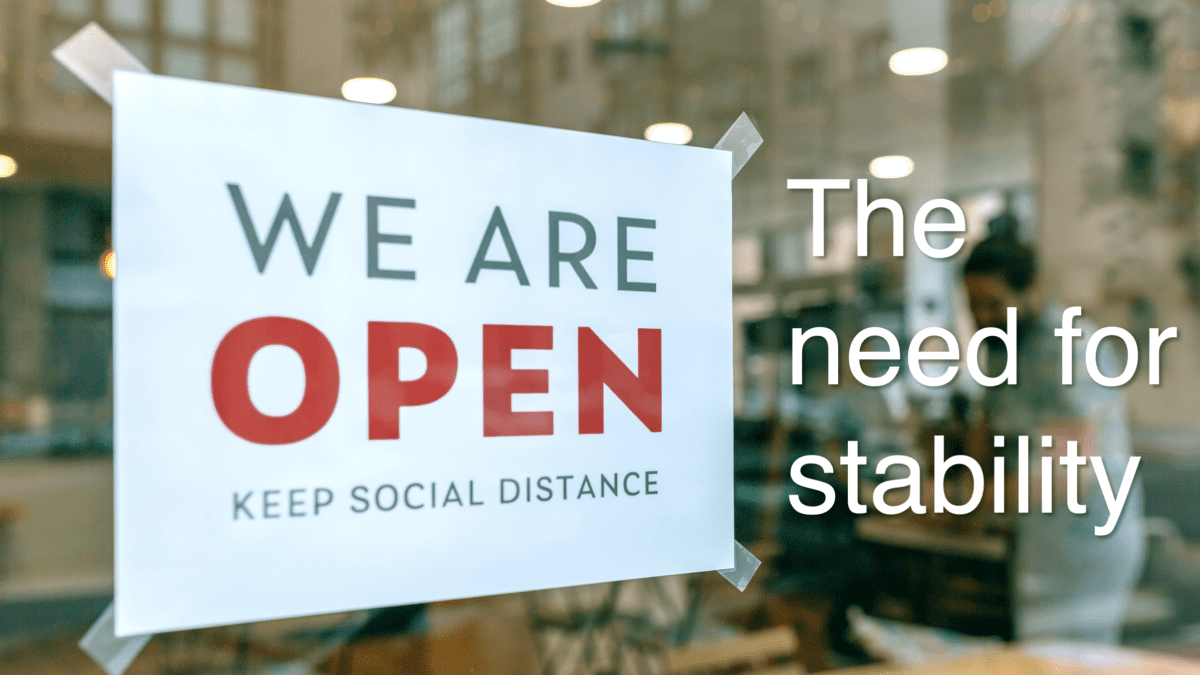
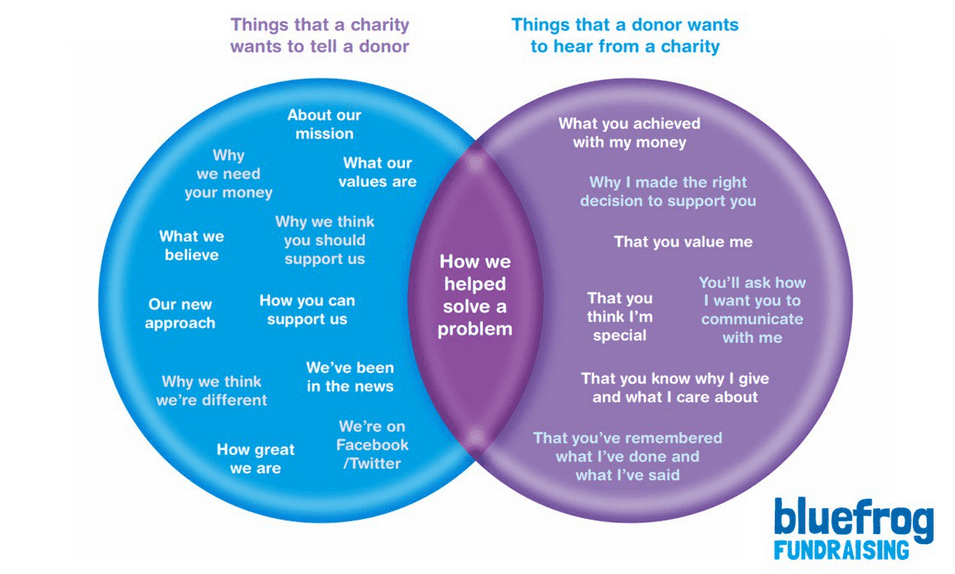
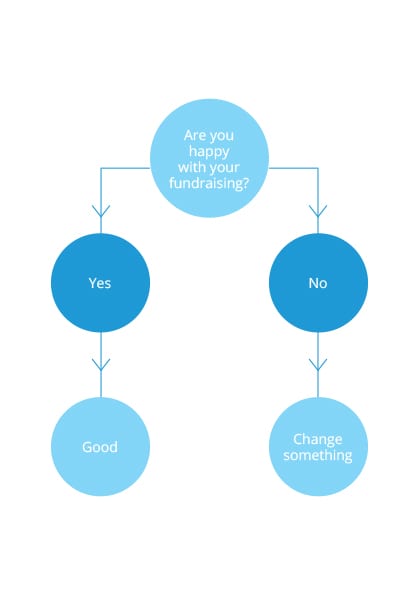





[…] The full post is definitely worth a read and there’s also a video version. Please check it out and give Mark some love: “What do donors think about giving now that we are 7 months into the pandemic.” […]
[…] after months of this, many of us are still feeling uncertain, afraid, and out of control. The whole situation, from medical concerns to financial worries, seems […]
[…] is a great piece from Mark Philips at Bluefrog on what donors think now that we are eight months into the pandemic. Mark also recorded a short […]
[…] What do donors think about giving now we are 7 months into the pandemic? […]
[…] What do donors think about giving now we are 7 months into the pandemic? […]
[…] By: THE BOOK OF COVIDENCE 6 – Persuasion Republic by THE BOOK OF COVIDENCE 6 – Persuasion Republic […]
[…] […] to Dramatically Increase Nonprofit Donations – Claire … by Charity Writing Digest – Survival of the most loving – 3rd Sector Mission Control […]
[…] By: We all want to be understood ⋆ Hands-On Fundraising by We all want to be understood ⋆ Hands-On Fundraising […]
[…] By: What Do Donors Think About Giving NOW? (Mark Phillips) • Productive Fundraising by What Do Donors Think About Giving NOW? (Mark Phillips) • Productive Fundraising […]
[…] post What do donors think about giving now we are 7 months into the pandemic? appeared first on […]
[…] What do donors think about giving now we are 7 months into the pandemic? […]
[…] What do donors think about giving now we are 7 months into the pandemic? […]
[…] What do donors think about giving now we are 7 months into the pandemic? […]